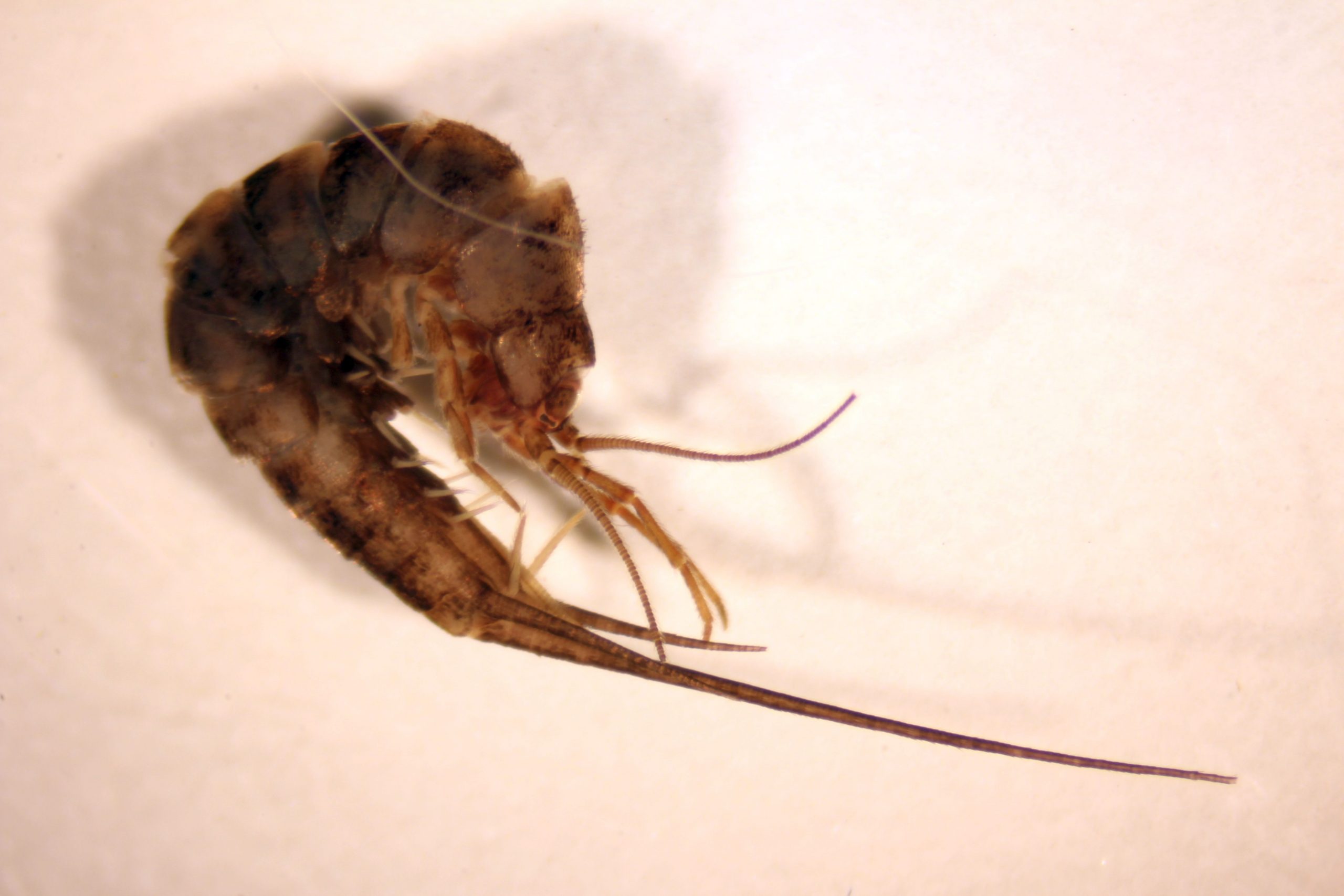32 Apterygota – Archaeognatha
Apterygota
The first two orders we will cover from the class Insecta are in the Apterygota. These orders are ancestrally wingless.
Archaeognatha (=Microcoryphia)
The Archaeognatha (“archeo” = “old”, “gnatha” = jaw) are characterized by mandibles that are monocondylic; that is, they have a single point of articulation with the head. The order is sometimes referred to as Microcoryphia (“micro” = “small”, “coryphia” = “head”). They are commonly called jumping bristletails. There are ~350 species worldwide, with 20 species in two families represented in North America.
Jumping bristletails have bodies covered with flat scales, and are no more than 15 mm long. They have both compound eyes and ocelli, as well as long antennae. The compound eyes are large and meet on top of the head. Both the mesothoracic and metathoracic coxae have styli, and tarsi are two- to three-segmented. Two cerci are present, relatively short compared to the cerci of the next order (Zygentoma/Thysanura), and there is also a central caudal filament.
Archaeognatha are fairly common in wooded areas around Prince George and can sometimes be found in urban habitats. They are relatively soft-bodied so, like most of these ancestral orders, must be preserved in ethanol.



Feedback/Errata